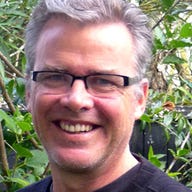Pond remodels education with a dose of social

When the New Zealand government established Network for Learning Ltd, or N4L, it set the company two big tasks: get schools connected to fibre and get them using it effectively.

In addition to building a managed network, N4L was to "deliver a range of dynamic content and services to the education sector".
The result is a fast-growing social platform called Pond unlike any you have seen.
Users are presented with three columns on their home screen. On the left is community content, stuff that has been put there by users. In the middle is a growing series of publicly available resources, databases of various kinds of curated content. On the right is the public internet.
If you do a search, all three deliver results and users can import links from either the resources or the broader internet to share and use in teaching.
Pond is already connecting teachers across the country, N4L's head of dynamic services, Chris South, explained at the AWS Summit in Auckland this week. Soon, students will be admitted as well.
Latest Australian news
Pond both surfaces more content and facilitates a level of serendipity into the process. The goal, South says, is equity of access and discovery, not conformity.
Once a useful resource has been found, Pond includes tools to help users share that back with their community. Teachers, for instance, can build buckets of content for given lessons and share these with other teachers, saving time and stimulating collaboration.
Likes are known as "ka pais", Maori for "good" or "well done", and also serve as bookmarks.
Different levels of access allow teachers and students to share and work together in a place where it's okay to be vulnerable, South said. The search also highlights the unit standards set for particular areas of study and facilitates cross-curricular relationships.
Users also get their own profile space to help facilitate the creation of networks. Profiles can be public or private.
Catalogue views allow users to access content for major topics, such as the recent World War 1 and ANZAC day commemorations.
Even though it is built for education, anyone can use the Pond platform's core search functionality (at Pond.co.nz) even if they can't access the communities.
Inside the communities, content is social, with up-votes and shares encouraged.
"Inevitably, some see it as a threat," South says. However, it is hoped the critics will be won over by user-centric design and a philosophy that the platform never mandates activities.
"Every member of the dev team sees every item of feedback," South said.
After just a few months since public launch, 8500 teachers are currently using the platform out of 60,000. South said Pond is adding up to 2000 new users a month.
Pond is a hybrid environment with .Net back end and integration, he said. NodeJS on AWS elastic compute EC2 provides the proxy layer and the front end is in AngularJS and HTML5.
South said the aim was to use best of breed to allow different layers of abstraction and isolation.
A lot of AWS services are in use including Simple Storage Service, DynamoDB, CloudFront and Elastic load Balancing.
"To achieve what we have with conventional infrastructure would have required a far larger team and a massive Capex budget, neither of which were options for us," South said.
N4L is a finalist in the New Zealand Hi Tech Awards, the winners of which will be announced tonight.